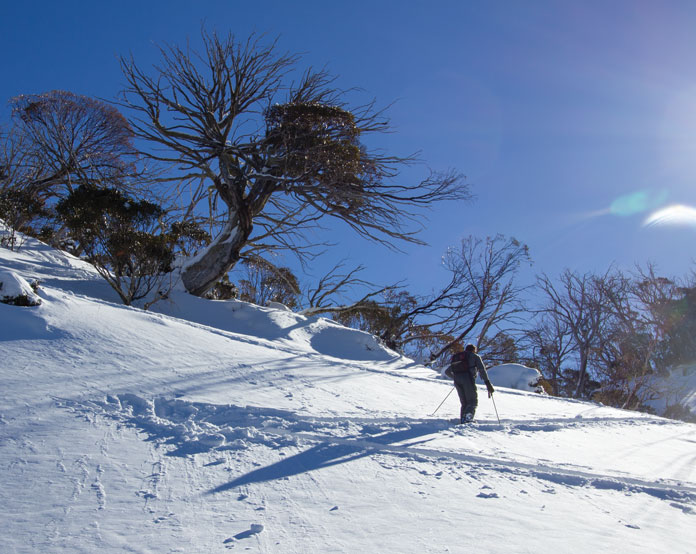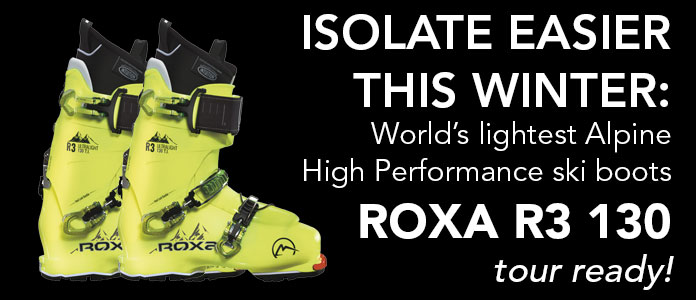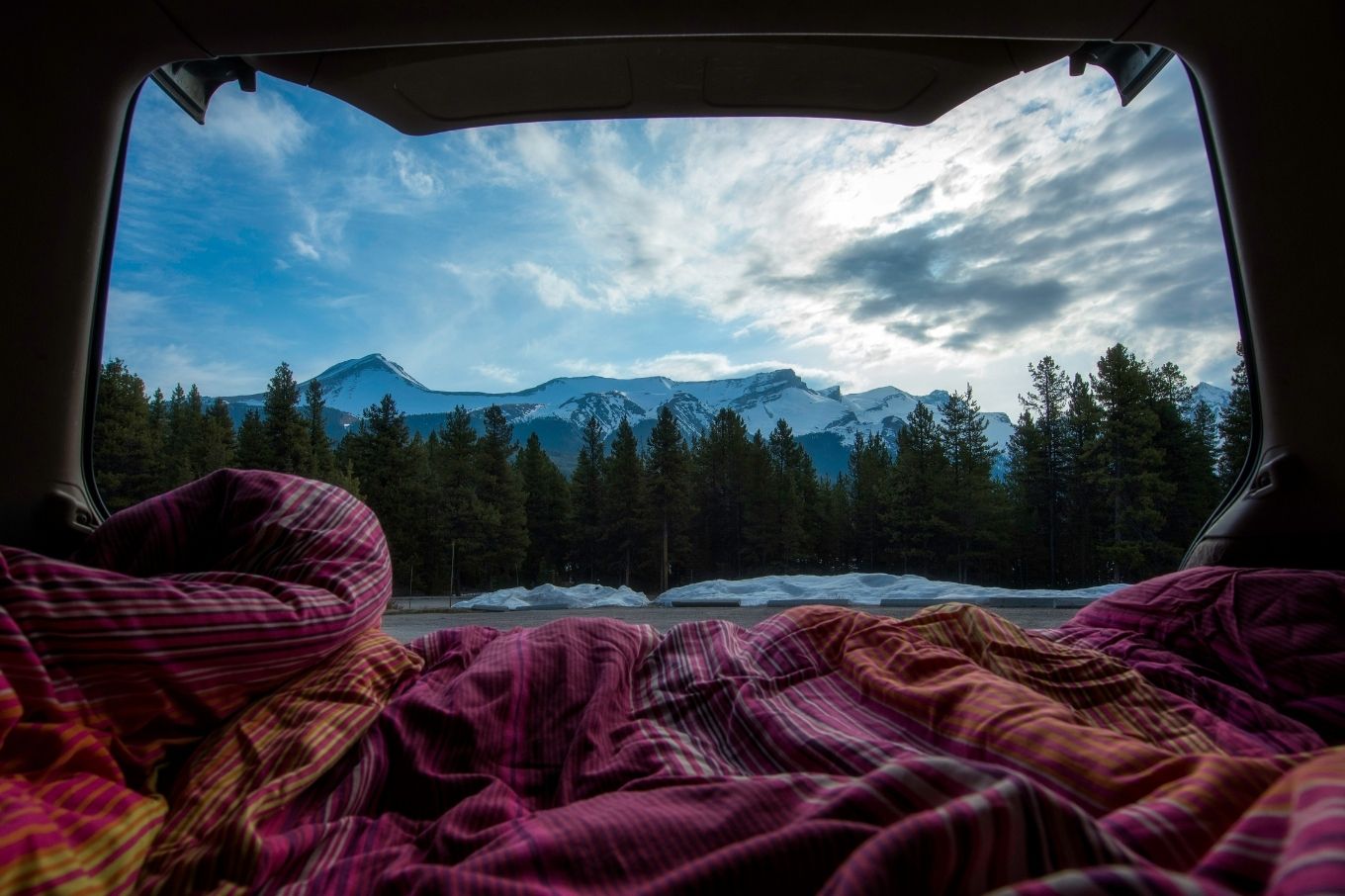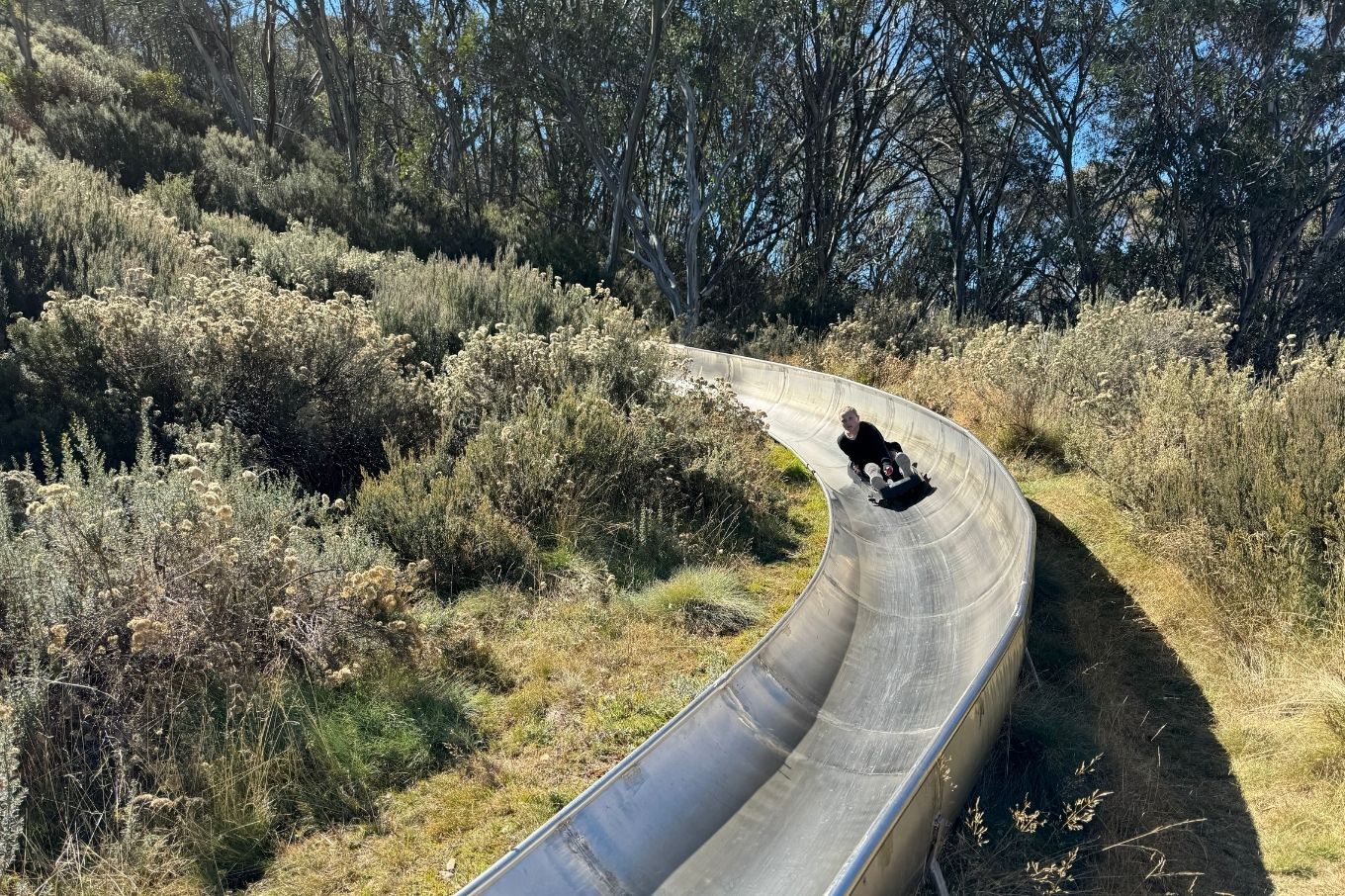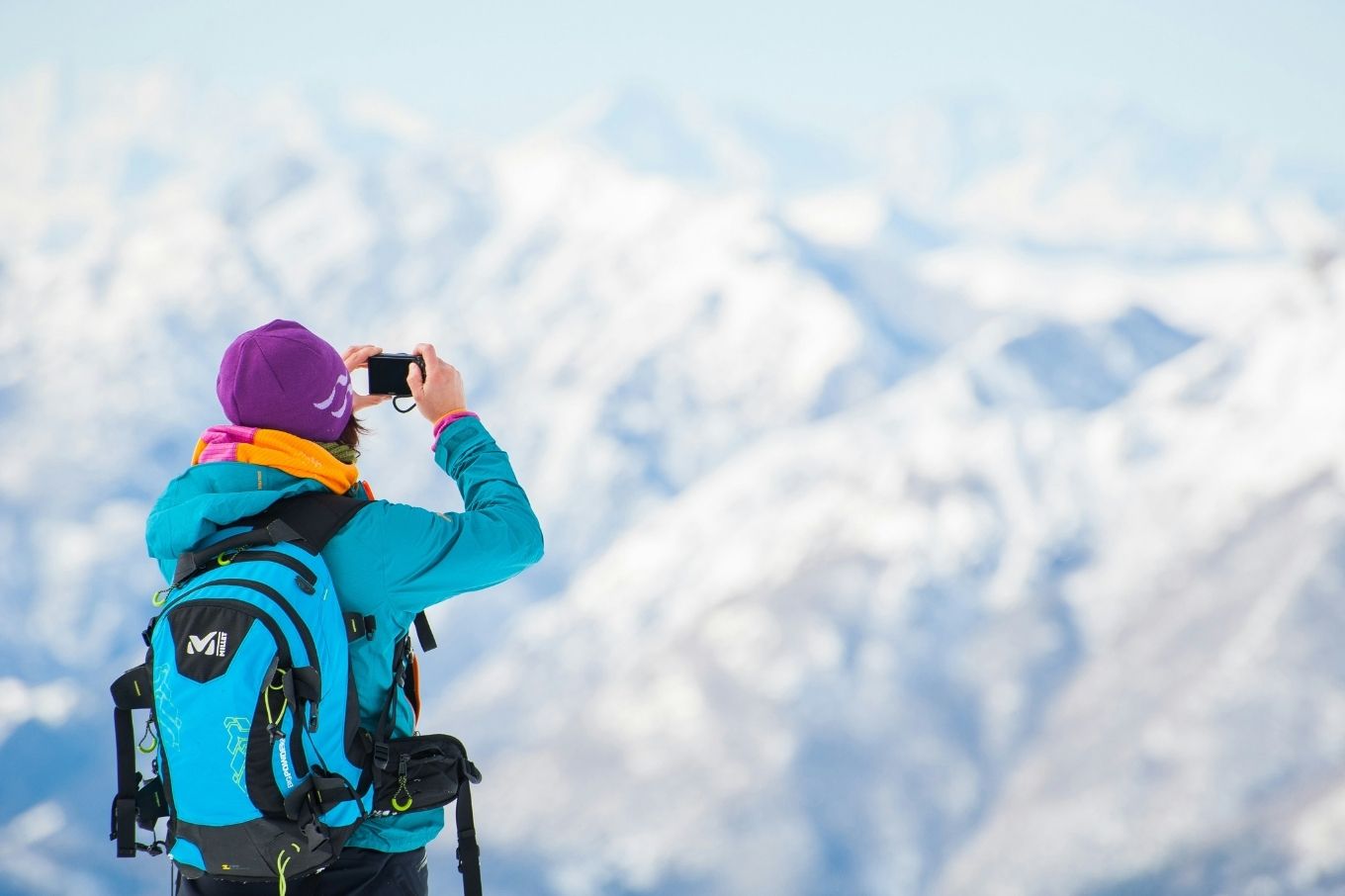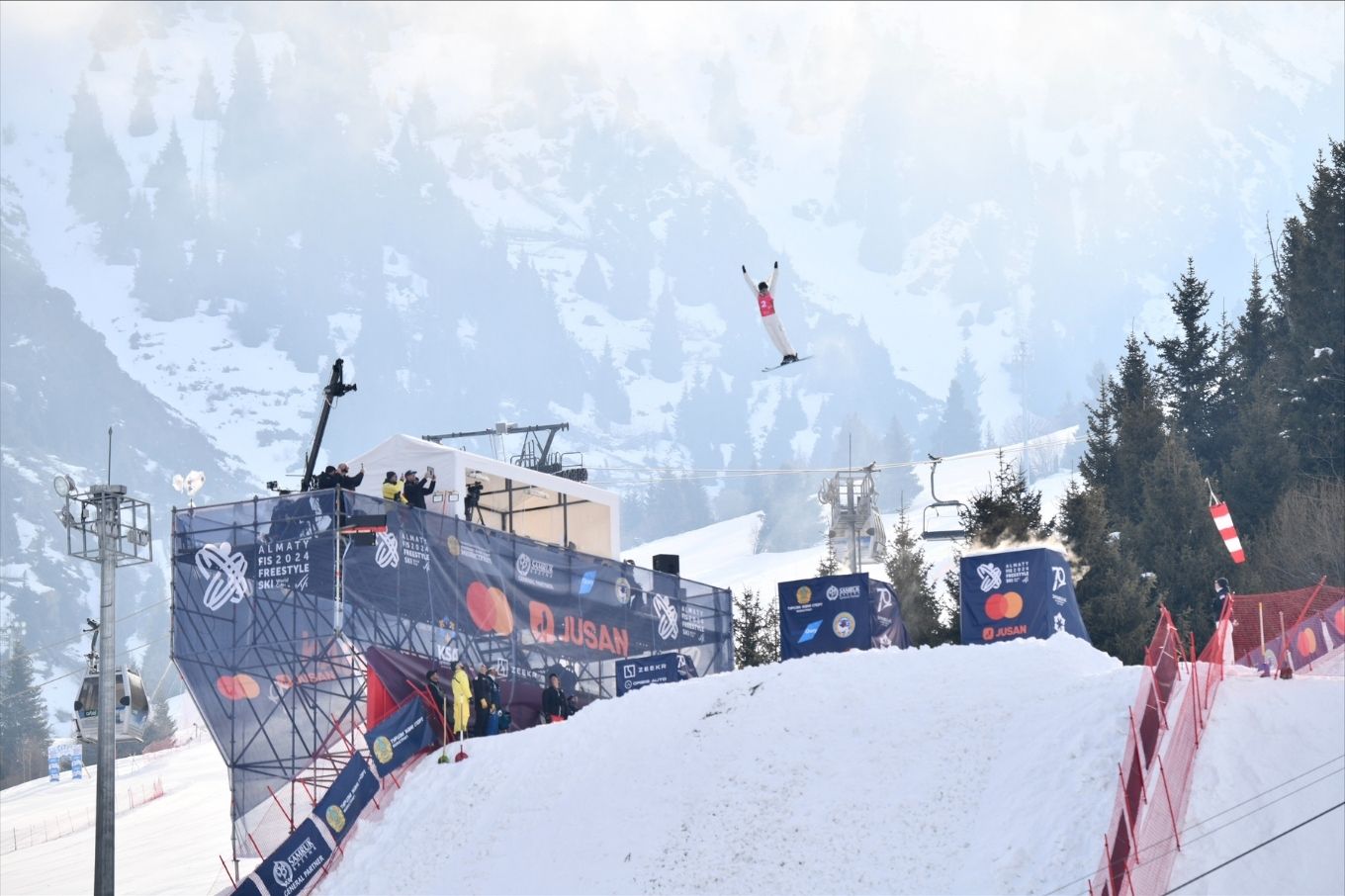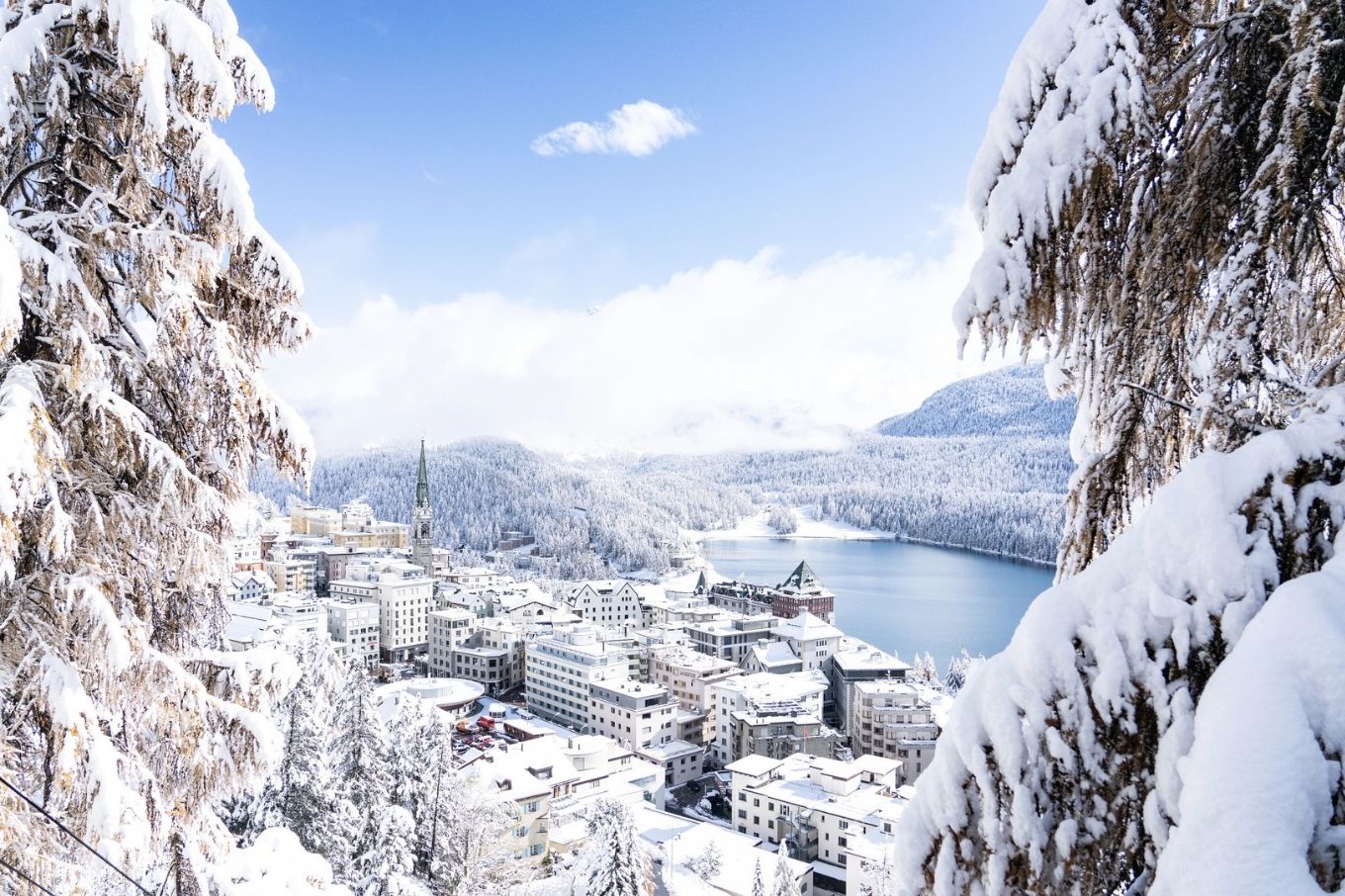Dropping into Twin Valleys on a gorgeous crisp July day with knee deep snow we weren’t complaining that the World class ski resort originally planned for the site never got the go ahead.
Sure, lift access would have made getting there easier than the 30 minutes or so skin over from the top of Thredbo. But we would have been sharing it all with the same school holiday crowds we had left behind.
We only met two others on the skin out, and only saw two more on the skin back up – the truly hard yards part of the equation. Seven people skiing the whole area all day, quite amazing when you know how good the skiing is out here.
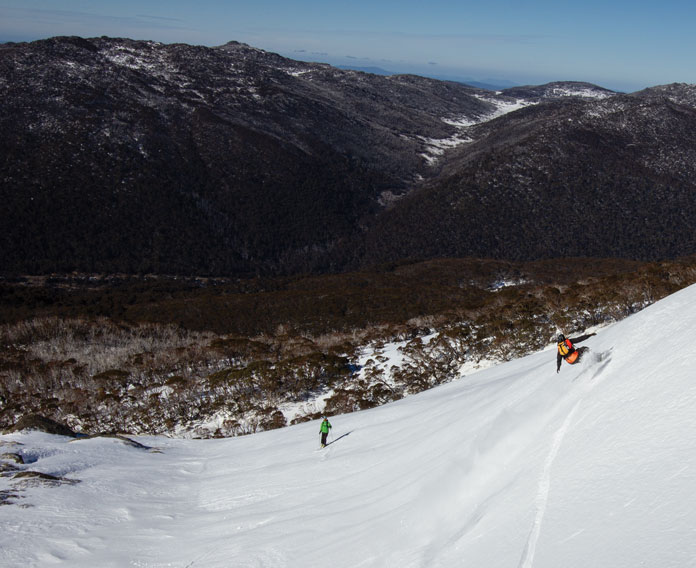
Twin Valleys history
Few now know or remember that Twin Valleys was the skier’s choice for where to build Australia’s next ski resort as the ski boom of the 1970s put huge pressure on the existing infrastructure. But the skier’s weren’t doing the choosing then, or now. Owain Price has the lowdown on why that was not such a bad thing, and what you are missing out on not checking it out for yourself in earn your turns mode ..
With just 5 big ski resorts, owned by just 3 companies, is it time to revisit the more lift-accessed skiing question downunder? Blue Cow was Australia’s last new ski area, opened in 1987 when the population was 16 million people. Now that’s 25 million and counting (fast), so if you think it’s getting more crowded you’re dead right.
Before ‘The Cow’ got the nod, Twin Valleys near Thredbo was the skier’s preferred choice for where to build a resort next. The generation of post-war European immigrants from ski backgrounds who saw the potential of Australia’s snow fields had spotted Twin Valley’s qualities early.
Those included big vertical drops – potentially up to nearly 800m – that would be enough to offer decent FIS Alpine race courses, top class ski racing being one of the things they had in mind when thinking about new and better ski resorts. Accessed from Charlotte Pass (which is actually even closer to Twin Valleys than Thredbo) it was home to the George Chisholm Downhill course from 1953 – 1956.
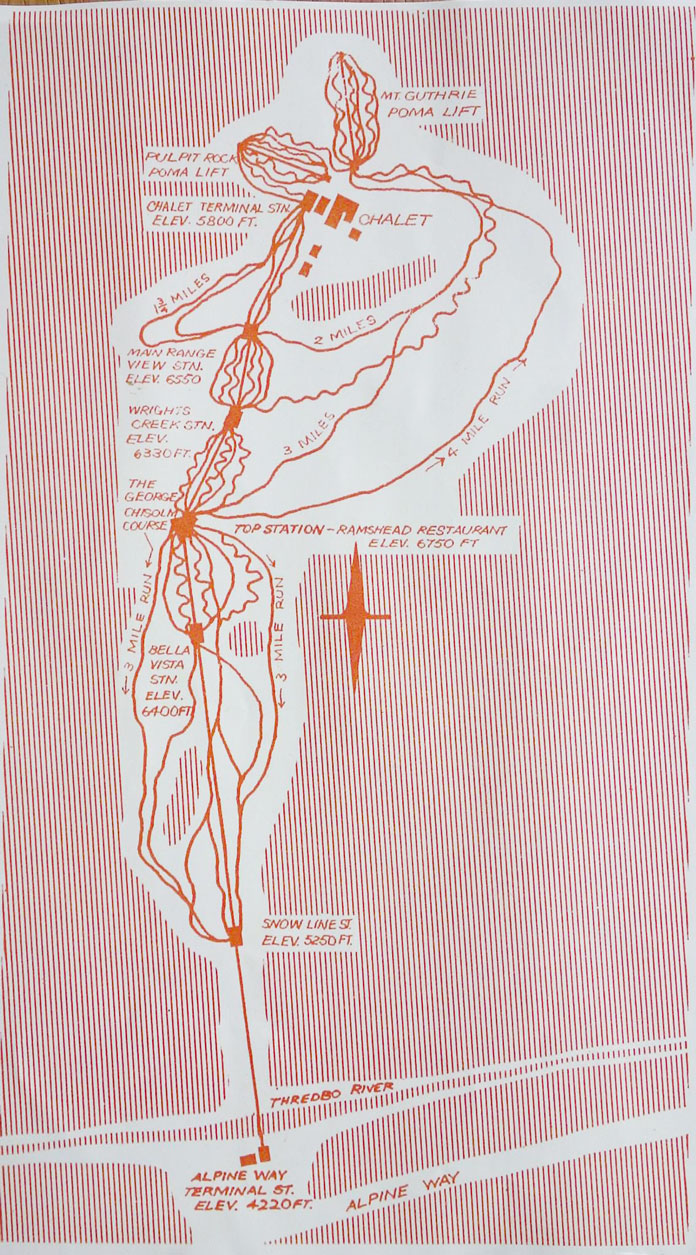
For one brief moment in time it actually appeared on a trail map, with the brief opening of the ill-fated Twin Valleys to Charlotte Pass lift – billed at the time as the longest chairlift in the World, although it was actually two chairlifts, one up from Charlottes and one up from the Thredbo River. Thanks to the Thredbo Alpine Museum for this map from 1964, the only season the lift operated. Follow their facebook page on the link for a steady stream of amazing ski history fotos and memories. Drop in there next time you’re in Thredbo, from one of the original chairs to old snowboards there is something to fascinate any snow lover.
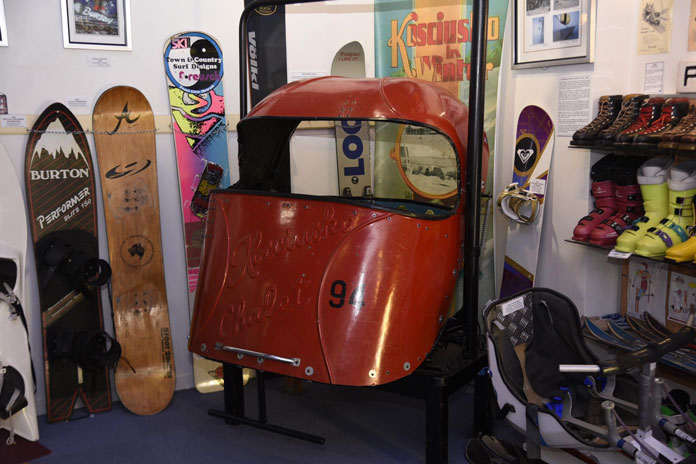
A lift up and over the Ramshead Range sounds pretty crazy to anyone who has ski toured along the range and felt the winds. And it was – people nearly died stuck on it! Opening in the snowiest winter ever didn’t help, but have a look at those runs – 3 miles down to the Snowline Station on the Twin Valley’s lift. A total vertical if you bashed on down under the liftline to the river of 2,550 vertical feet (774m)! Or a gentler 4 mile ramble back to Charlottes.
Got to say it would save a lot of effort to have a version of that working again .. But then the runs would be way more tracked than this!
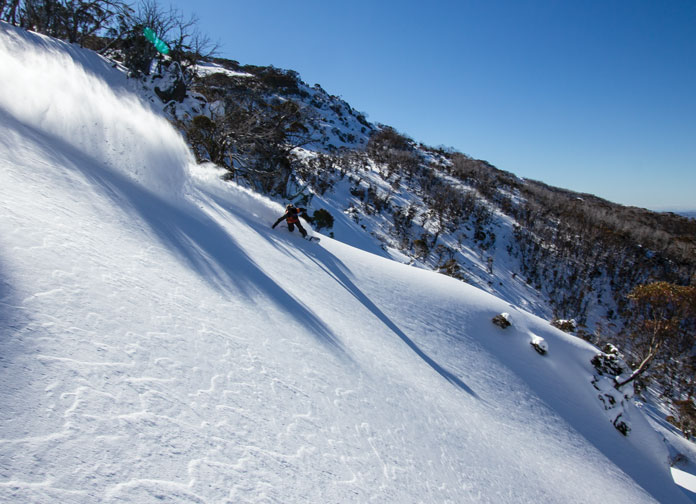
In fact the Twin Valleys site was considered as the prime option for a ski resort back then too.
But with the Alpine Way already built and snow coming down to the valley close to the road there more often, especially in the big winters of the 50s, Thredbo was a logical first and easier choice.
As Australian skiing grew steadily through the 60s, then boomed in the 70s and 80s, the need for more / better / bigger resorts, and better access to them, got ever more urgent.
In NSW all the potential ski terrain lay, and lies, within the Kosciuszko National Park. Initially that was a positive thing for skiing’s development. When then NSW Premier, later Australian Governor General, Sir William McKell, dedicated the park in 1943 he envisioned it beoming a winter sports ground to rival anything in Switzerland, that would lure tourists from all over the Commonwealth. Which was pretty forward thinking, especially as it was the middle of World War 2.
Through the 50s we were on track to do that, as lift-accessed skiing expanded out to the Holy Grail of Aussie snow, the Main Range. Out here above 1800m, even as climate change inexorably shrinks the extent of winter snow cover, there is still often skiable snow from May to November.
But a deadly avalanche in 1956 took out Kunama Hut, and soon after a fire destroyed the rope tow base station next to it.
The bold ski lift experiment on the Main Range was effectively over. It was never allowed again. At the same time, skiing started to grow at the Perisher Range areas, then Thredbo, which opened in 1957.
By the early 1980s the access roads to these were increasingly choked. In pre-Skitube days we used to leave Canberra at 4am heading to Perisher on a Saturday, because if you didn’t get past Jindabyne by 7am it could take as long from Jindabyne to the old park gate toll station at the entrance to the park as it did from Canberra to Jindabyne!
The NSW National Parks and Wildlife Service took an ever more anti-development line, and didn’t seem too bothered how long skiers, whose access fees supplied most of the park’s revenue, waited in the traffic jams. For example, the simple option of adding a fee to lift pass sales and a trail head fee for XC skiers could have eliminated those toll gate choke points completely. But the NPS deemed that a logistical impossiblity. Until Skitube opened, and lo and behold, park entry simply got included in the Skitube ticket. Thanks for all the long waits guys..
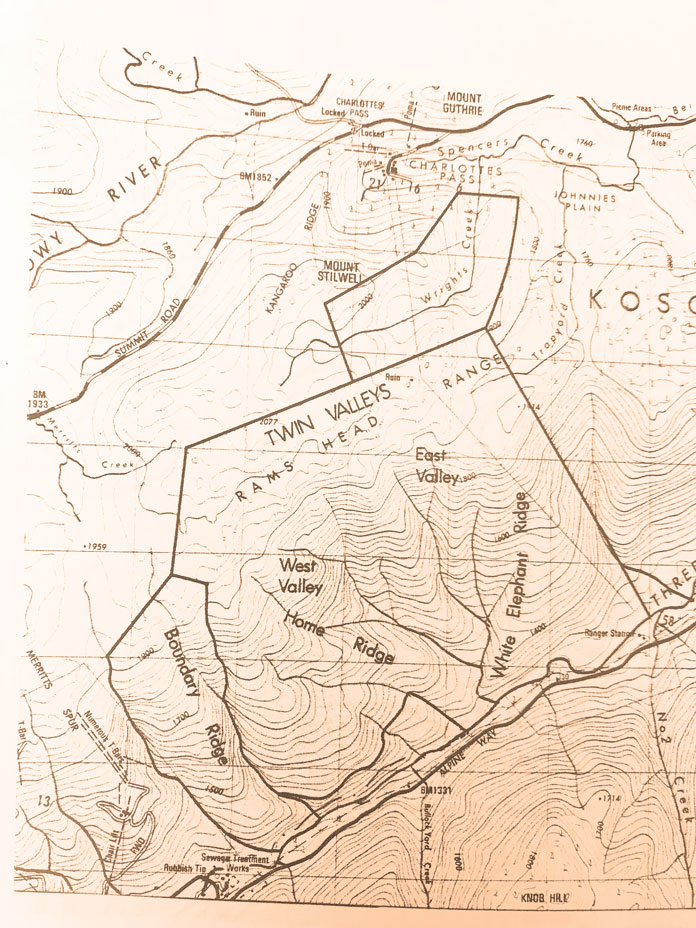
Meantime the NSW Ski Association and Australian Ski Federation put a lot of time, effort and volunteer resources into researching the best available options for new resorts.
With a wealth of local and international ski experience, they were up date with the latest developments at major resorts overseas. Far from a cultural cringe that overseas was better, they had a view that yes, Australia could and should have its own world class ski resorts.
Initially they had some encouragement, actually being commissioned by the NSW NPS to undertake a study into the feasibility of Twin Valleys in the late 1970s.
Not surprisingly, their study concluded Twin Valleys was far and away the best option in Australia for a new ski area. Access was relatively simple, requiring just a short entry road off the Alpine Way. There were several good options for village sites and a mountain base, where disruption to the environment would be minimal. The best village sites were tucked behind ridgelines barely visible from the Alpine Way. Most importantly, the ski potential was unmatched.
Let’s look at the skiing first – it is unmatched indeed. Anyone who skis or boards at a reasonable level can’t help turning their head towards the tasty Twin Valley’s ridgeline visible as they drive up to Thredbo. If there’s snow, there will always be plenty piled into the upper slopes visible from the Alpine Way. Stop at the lookout and check them out – I have spent 30 years craning my neck and not paying attention to the road, drawn irresistibly to speculate on skiing them.
Twin Valleys the skiing
Get up close and you soon see how the available runs truly cover the full spectrum. Open faces drop off the wind-scoured ridge line, leading into rolling open fields and gullies past clumps of snowgums.
After fresh snow on a crisp July day we chose to slash lines on the sunnier side. If that sogged out you would still find shady shots aplenty on the south facing options. As you roll on down things just get better and better. It’s a bit similar to Cannonball at Thredbo, without the people or the bumps underneath from previous traffic.
We stopped for pictures several times, resisting the temptation to just bomb one massive heliski quality pow line all the way down to where the creek flattens out and the forest closes in. Given the effort to get there – and get back – making it last was the smart play. You can work the steep middle zone for more quality laps without hauling all the way up.
The snow collects deeply here, sheltered from wind, so setting the steep skin track takes serious effort. Snapping out of my King Pin toe binding on one corner I went for a thigh deep wade getting organised again – just like Japan!
There was no pressure to be first, or be beaten to the goods. We were the only ones on the West Valley side, two other guys going further round to the East Valley side being our only ‘competition’ for tracks all day.
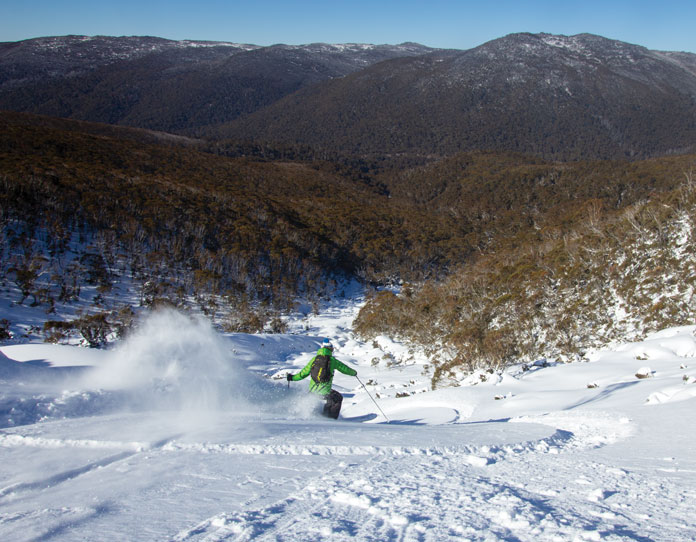
Stopping for shots also made it easier to envisage where ski runs could go. There is scope for beautiful wide intermediate groomed trails holding excellent sheltered snow in the upper bowls section, which seems a bit more protected then similar altitude areas along the Ramshead Range at Thredbo.
The NSW Ski Association’s Twin Valley’s report also identified several flatter beginner area options around their potential village sites lower down. That was 40 years ago, without reference to snowmaking at all. A lot of the higher terrain, like that to skier’s left shown opposite, would be suitable as well with modern gear and techniques.
On the south facing slopes the Ski Association study concluded reliable snow could be found down to 1400m most years, and that’s still true. That’s 600m vertical or more – the top of the Rams Head Range here is 2077m – with the possibility if there was a run out on down to a base station to extend that well over 700m. Which would edge Thredbo for Australia’s biggest lift accessed vertical drop.
The skiers who compiled the report obviously knew their stuff. Twin Valleys remains as perfect a site for a ski resort, short of opening up the Main Range, as Australia has left.
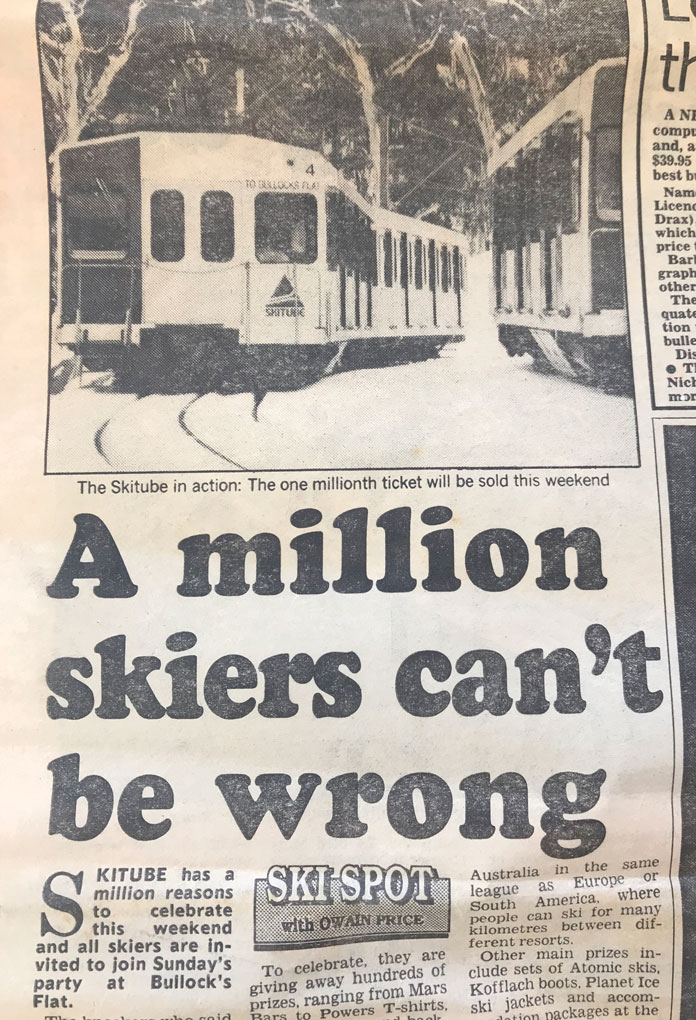
Blue Cow and Skitube – the National Park’s alternative
But as we said in the intro, the skier’s weren’t making the decisions. The big calls all went to the NSW NPS, backed by successive Liberal, Labor, Liberal and Labor governments.
The NPS had from the 1970s developed an increasingly strongly entrenched view that skiers didn’t really need to stay on snow, park bed numbers should be strictly limited, and day ski resort development was the only serious option.
With that top of mind, Blue Cow was born, and with it the Skitube rack railway tunnel from the Thredbo Valley through to Perisher and on to Blue Cow.
As originally constituted, Blue Cow was a nice, but pretty limited area, with mostly rocky, exposed terrain that didn’t hold snow particularly well. You basically skied around in a circle there then. At least it meant more competition, which had been one of the major concerns of the Ski Association, that a new operator came into the market and there was some pressure to keep lift ticket prices down. Blue Cow even had an innovative mileage ticket initially, that let you pay for how many runs you did. People soon worked out this was much cheaper than day passes, as most average skiers get tired after a few laps, so that didn’t last long.
The beginner terrain was the most exposed, the intermediate terrain mainly made up of short runs, and most of the better terrain had a northerly aspect, so it sogged out fast. The initial lift placement didn’t help much either. Beginners got Blue Cow’s only detachable quad, a fast ride for the slowest skiers. The best runs off the Summit, that attract most intermediate and advanced skier traffic, just got regular slow quads. That failing is still most evident on busy days at the choke point at the bottom of the Ridge Chair. Memo Vail Resorts: fast track the 6-pack express replacement, please!
Fortunately, linking Blue Cow with the existing Guthega and Perisher was envisaged in the NPS plans, and as Blue Cow swallowed Guthega then Perisher swallowed Blue Cow in quick succession a generation of skiers has enjoyed the benefits of today’s mega Perisher Resort.
Skitube has certainly defied the critics. Those vociferously included the NSW Ski Association and Australian Ski Federation at the time, so the skier’s lobby got that one wrong. Skitube has long since become an integral and vital part of the NSW ski landscape, taking millions of passengers off the Perisher road.
The free parking is a bonus, and you don’t really notice the park entry fee built into the skitube tickets. For first timers, families and day trippers it makes things pretty simple.
I never get sick of walking out the doors and skiing downhill from Blue Cow terminus, my preferred start point at Perisher. It’s just like in Zermatt or Wengen – maybe the NPS were channeling William McKell and his 1943 vision of Australia being as good as Switzerland when they backed it? Or not.
Where to next for NSW ski development?
But Skitube has been running at its limit for years, requiring major investment to upgrade capacity. Pumping more skiers up Skitube and giving them a few 6 seat express lifts to spread out on would certainly relieve pressure, especially if the Perisher village re-development gets back on the agenda. If anyone can do that you’d have to figure the World’s #1 Ski Resort company, Vail Resorts, can.
Pumping even more beds into Thredbo, and more lift and terrain development there (whatever happened to Golf Course Bowl?) would also stave off pressure to revisit the more ski resorts question.
Not that we’re advocating massive development, or neccessarily any. There are plenty of low impact ways to open up more of Australia’s superb terrain to more people, for example:
• Run a cat to Twin Valleys from Thredbo or Charlottes Pass
• Do skidoo tows, like Steve Lee has done so successfully for years to Mt Mackay from Falls Creek.
• Put a track and footbridge over the river out the bottom of Twin Valleys that could be for summer hiking/biking as well a skier’s exit.
• Develop Charlottes Pass as a longer season gateway to Twin Valleys and the Main Range areas for the booming backcountry market.
But don’t hold your breath for a change of policy. Just do yourself a favour and skin out there for a slash – Twin Valleys remains accessible world class terrain in our backyard.
For more on gear to help you get out there – or anywhere – check some our reviews like Snowboard Editor Peter Wunder’s split board test here.
